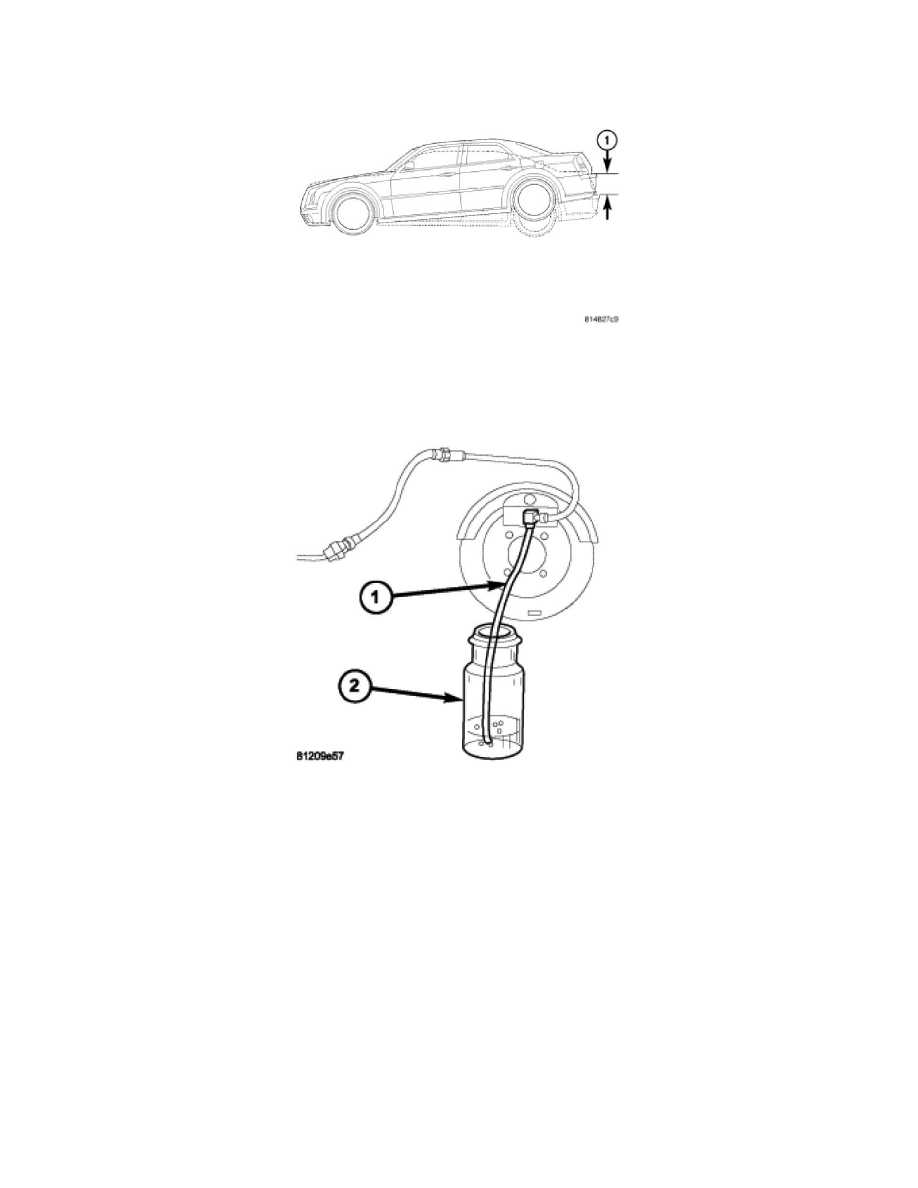Magnum V6-2.7L VIN T (2007)

NOTE: To ensure all air is bled from the ICU or junction block in a timely manner, it is recommended to raise the rear of the vehicle
approximately 5° higher than the front or approximately 10-12 inches as measured at the rear bumper (1).
1. Raise and support vehicle placing rear of vehicle approximately 5° higher than the front or if measured at the rear bumper (1), approximately
10-12 inches above level. It will be necessary to add extra support stands under vehicle to support this angle.
2. Remove rubber duct caps from all 4 bleeder screws.
3. Attach a clear hose (1) to the bleeder screw at one wheel and feed the other end of the hose into a clear jar (2) containing fresh brake fluid.
4. Have an assistant pump the brake pedal three or four times and hold it down before the bleeder screw is opened.
CAUTION: Open the bleeder screw at least one full turn when instructed. Some air may be trapped in the brake lines or valves far
upstream, as far as ten feet or more from the bleeder screw. If the bleeder screw is not opened sufficiently, fluid flow is restricted causing
a slow, weak fluid discharge. This will NOT get all the air out. Therefore, it is essential to open the bleeder screw at least one full turn to
allow a fast, large volume discharge of brake fluid.
5. While the pedal is being held down, open the bleeder screw at least 1 full turn. When the bleeder screw opens the brake pedal will drop all the way
to the floor. Continue to hold the pedal all the way down.
6. Once the brake pedal has dropped, close the bleeder screw. The pedal can then be released.
7. Repeat steps One through Five until all trapped air is removed from that wheel circuit (usually four or five times). This should pass a sufficient
amount of fluid to expel all the trapped air from the brakes hydraulic system. Be sure to monitor brake fluid level in master cylinder fluid reservoir
making sure it stays at a proper level. This will ensure air does not reenter brake hydraulic system through master cylinder.
NOTE: Monitor the brake fluid level in the fluid reservoir periodically to make sure it does not go too low. This will ensure that air does
not reenter the brake hydraulic system.
8. Bleed the remaining wheel circuits in the same manner until all air is removed from the brake hydraulic system.
9. Check brake pedal travel. If pedal travel is excessive or has not improved, some air may still be trapped in the hydraulic system. Rebleed the brake
system as necessary.
